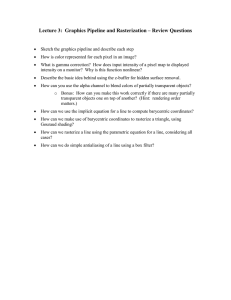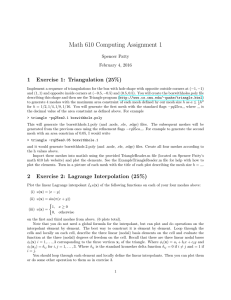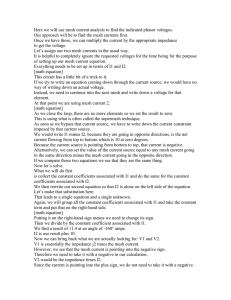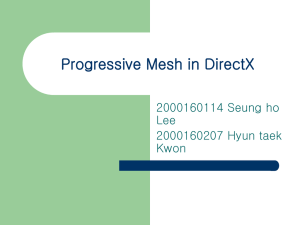review06
advertisement
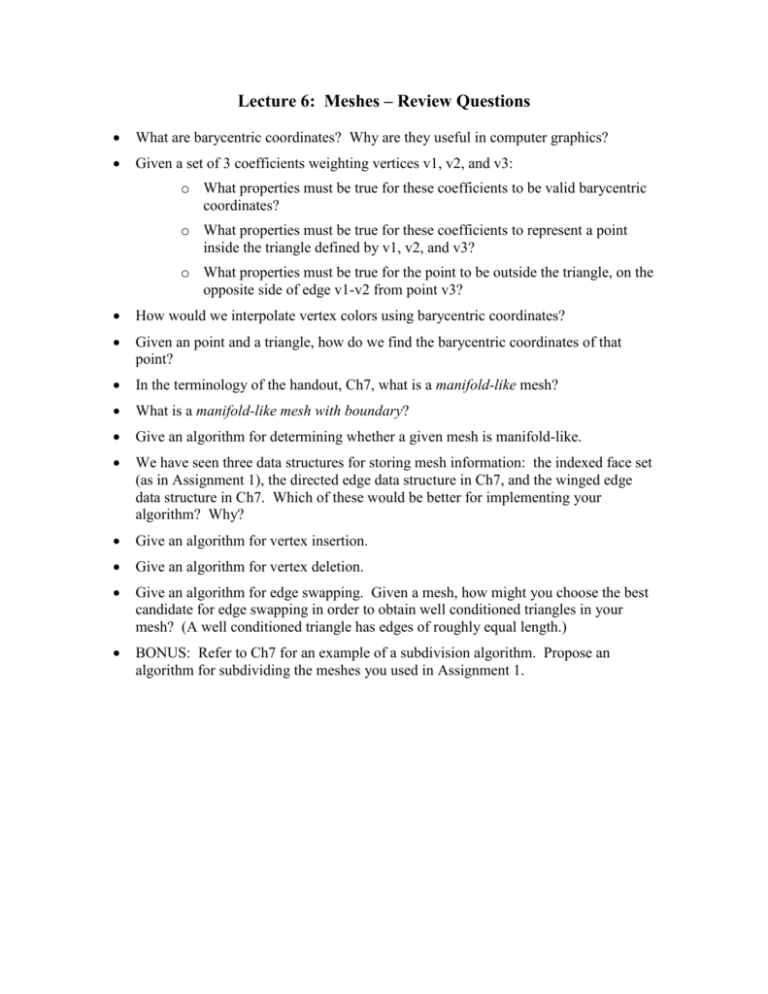
Lecture 6: Meshes – Review Questions What are barycentric coordinates? Why are they useful in computer graphics? Given a set of 3 coefficients weighting vertices v1, v2, and v3: o What properties must be true for these coefficients to be valid barycentric coordinates? o What properties must be true for these coefficients to represent a point inside the triangle defined by v1, v2, and v3? o What properties must be true for the point to be outside the triangle, on the opposite side of edge v1-v2 from point v3? How would we interpolate vertex colors using barycentric coordinates? Given an point and a triangle, how do we find the barycentric coordinates of that point? In the terminology of the handout, Ch7, what is a manifold-like mesh? What is a manifold-like mesh with boundary? Give an algorithm for determining whether a given mesh is manifold-like. We have seen three data structures for storing mesh information: the indexed face set (as in Assignment 1), the directed edge data structure in Ch7, and the winged edge data structure in Ch7. Which of these would be better for implementing your algorithm? Why? Give an algorithm for vertex insertion. Give an algorithm for vertex deletion. Give an algorithm for edge swapping. Given a mesh, how might you choose the best candidate for edge swapping in order to obtain well conditioned triangles in your mesh? (A well conditioned triangle has edges of roughly equal length.) BONUS: Refer to Ch7 for an example of a subdivision algorithm. Propose an algorithm for subdividing the meshes you used in Assignment 1.
